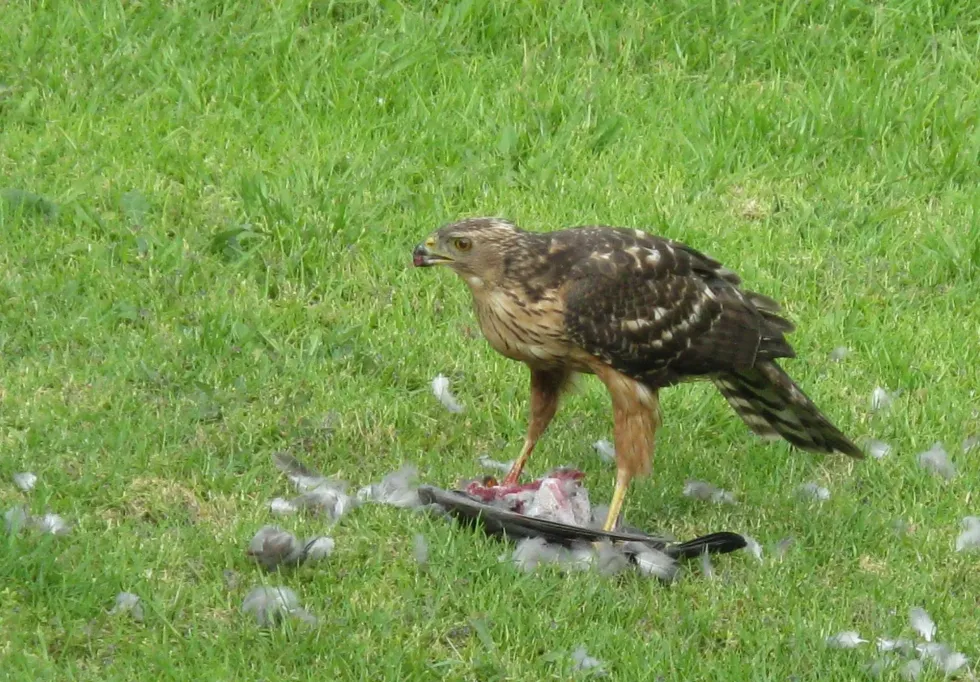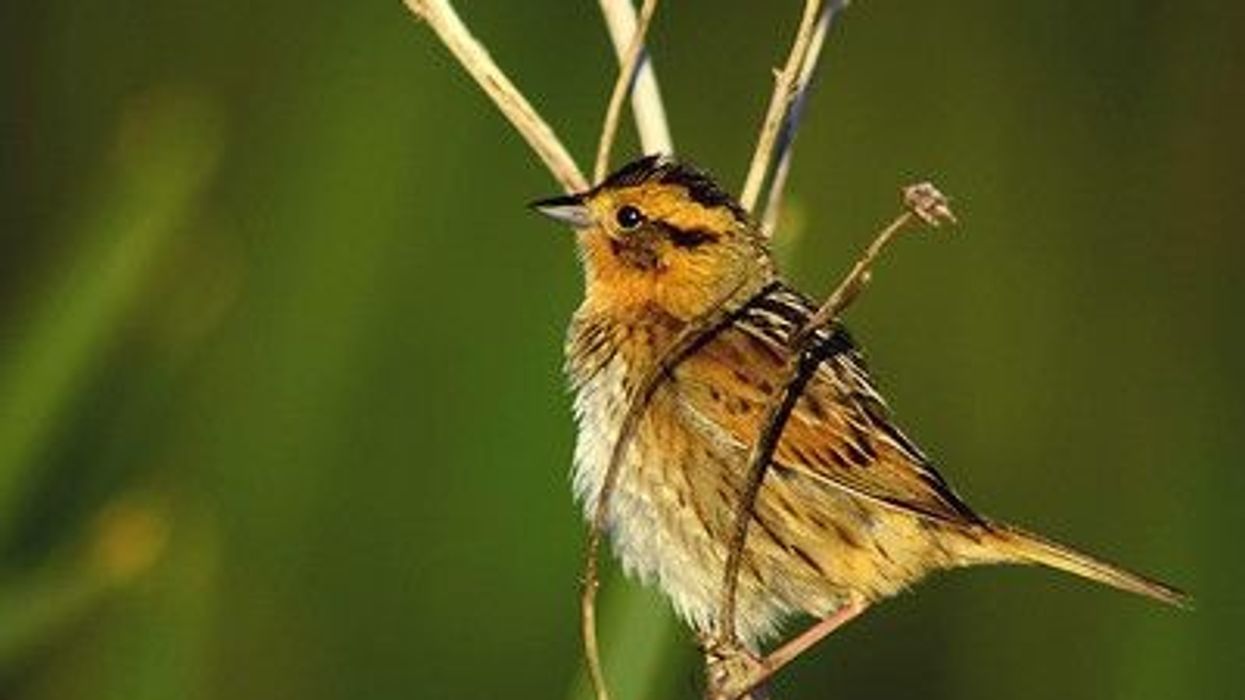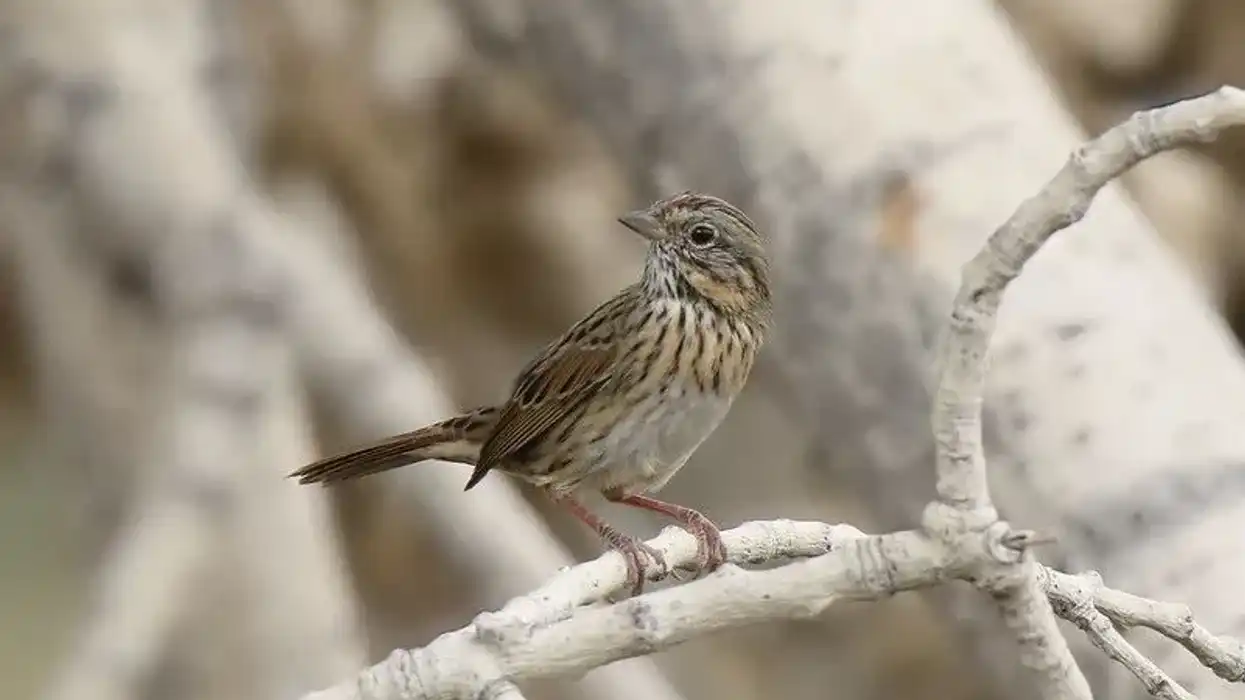Birds of prey like hawks and eagles never fail to mesmerize us because of their sheer power. Here, we are going to learn about black sparrowhawks (Accipiter melanoleucus) that are mainly found in sub-Saharan Africa and South Africa.
This bird is especially seen around the Cape Peninsula. This beautiful bird is named after its black and white color found in two morphs, white and black. The young birds look different because of their brown feathers.
Apart from areas with tall trees, the African black sparrowhawk spends its time around urban areas. This bird has a keen flight that helps it swiftly hunt while sitting on top of a tree-lined with green leaves.
The females catch larger prey compared to the male black sparrowhawk and also appear bigger and fluffier. Sometimes breeding is done to include these raptors in falconries because of their sheer powers.
As a monogamous bird, the parent pair takes good care of chicks during the breeding season and takes care of the nest. The female bird usually lays around two to four eggs, and these hatch in just 36-38 days. According to IUCN, this bird has a stable population distribution.
Want to find more about these birds? Keep on reading to learn more black sparrowhawk facts. Also, check out the articles on the ovenbird and swallow-tailed kite for more facts about other birds.
Black Sparrowhawk Interesting Facts
What type of animal is a black sparrowhawk?
Black sparrowhawks are raptors that are also known as black goshawks (Accipiter melanoleucus).
What class of animal does a black sparrowhawk belong to?
The black sparrowhawk belongs to the class Aves and to the genus Accipiter. This genus is shared with several other hawks and goshawk species.
How many black sparrowhawks are there in the world?
As a widely found bird species, it is hard to tell the exact population of this bird. However, IUCN believes that the population in southern Africa is on the decrease even after sparrowhawks took to the eucalyptus tree forest.
Where does a black sparrowhawk live?
Black sparrowhawks are native to sub-Saharan Africa, where the birds have taken to urban areas and human-altered areas. These birds also have an affinity for fancy tall trees like eucalyptus trees, giving them a successfully concealed perch for hunting.
A big population of the bird is seen in the Cape Peninsula, where it has taken to many urban areas. The black sparrowhawk range map may also differ based on its morph. For instance, the black morph is mainly found near coastal areas of South Africa.
What is a black sparrowhawk's habitat?
These birds do not live in deserts but prefer to dwell near them. This sparrowhawk can also exist in urban or semi-urban areas without any problem. Black sparrowhawks prefer to stay at an elevation of 12,100 ft (3.68 km).
Most are divided amongst areas like woodlands, riverine areas, and outside farmlands. It likes places with tall trees like eucalyptus and pine to keep an eye on its prey. In its habitat, it can sometimes fight with other birds like Egyptian geese and crows.
Who do black sparrowhawks live with?
Like most other birds of prey species, black sparrowhawks are also solitary birds except for the breeding season. Many sparrowhawks also like to make nests together in a similar space. This species may face some habitat competition in Cape Peninsula from Egyptian geese and it may lead to fights, especially during the nesting season.
How long does a black sparrowhawk live?
Even though we don't know the exact duration for which these medium-sized birds may live, typically, sparrowhawks live for about three to four years in the wild.
How do they reproduce?
The breeding time of a population of sparrowhawks will depend upon its geographical distribution. However, most birds breed successfully before November.
Tree canopies and tall trees are preferred for nesting sites to protect the nest from harsh weather. The pair is monogamous in nature, and the birds come back to the same nesting sites for many years. During nesting, the female bird is generally present in the nests while the male hunts for food.
The pair will often use eucalyptus leaves on the nests to deter bugs and ticks. Around two to four eggs are laid by the females, and incubation lasts for up to 38 days.
After the chicks have hatched, it takes about 37-50 days for fledging. The pair of male and female birds will take care of the chicks before the young are ready to take on the world. Even though the pair rarely has threats, Egyptian geese often like to poke around the nests.
What is their conservation status?
According to the International Union for Conservation of Nature Red List, the black sparrowhawk are currently placed in the status of Least Concern.
Black Sparrowhawk Fun Facts
What do black sparrowhawks look like?
The black sparrowhawk (Accipiter melanoleucus) is a spectacular medium-sized bird that is usually covered in white and black feathers. It is polymorphous in nature, meaning some birds may have a different feather pattern.
The black morph or white morphs vary according to their habitat and geographical location. In white morph birds, there are white feathers on the bird's chest with black feathers on the back.
In contrast, the black morph has completely black or dark feathers on its body. The eyes and legs are yellow, while the beak is yellow with a tinge of black.
Dark sparrowhawks have the advantage of going unnoticed while hunting in the dark, and they are also less prone to be attacked by parasites. The juveniles and chicks have absolutely different feathers compared to adult black sparrowhawk feathers, as the young birds are mostly covered in brown feathers.
At the same time, these chicks are usually covered in white down. Looking at a black sparrowhawk drawing will give you a clearer idea of what these raptors look like.

How cute are they?
These forest birds cannot really be called cute, but they do have a majestic look. Black morphs look especially spectacular because of their rare color.
How do they communicate?
These birds are mostly silent and tend to vocalize only during the spawning season. The males hunt and bring food to the females while making a 'keeyp' sound.
On the other hand, the females have a 'kek' call which acts as a response to the males. Mating calls have also been noticed in the species, and they are made by both the male and the female bird.
Females may also produce a 'kweeeeee-uw' call when it is on the nest. Juveniles beg for food from their parents with a 'weeeeeeeeh' sound.
As a solitary species, not much communication is needed for this species except for the mating season. However, when it senses a threat, both sexes can make alarm calls.
How big is a black sparrowhawk?
These medium-sized birds have an average length range of 18.1-23.6 in (46-60 cm). If we compare black sparrowhawk vs. coopers hawk, then the sparrowhawk will seem slightly larger. The average size of a Cooper's hawk is around 14-20 in (35.5-50.8 cm).
How fast can a black sparrowhawk fly?
As a sparrowhawk, these birds have an average flight speed range of 18.64-24.85 mph (30-40 kph). However, it can easily reach a speed of 31.06 mph (50 kph) when it is in hunt mode. The flight speed is an important part of its hunting tactics, as the bird is known for hiding behind foliage while tracking its prey.
How much does a black sparrowhawk weigh?
The average weight range of black sparrowhawks is around 0.99-2.24 lb (450-1020 g). In this species, the females tend to be fluffier than the males.
What are the male and female names of the species?
Like other hawk species, black sparrowhawk males are called tierces, while females are called hens. The females of this species are known to feed on larger prey compared to males.
What would you call a baby black sparrowhawk?
A baby black sparrowhawk is called a chick.
What do they eat?
As a bird of prey, black sparrowhawks mainly feed on other animals. The main food items in its list include doves, pigeons, blackbirds, and francolins.
When these birds aren't available, they will also eat small mammals like rats, bats, and even juveniles of mongeese as food. This species likes to prey on birds with a weight range of 2.8–10.6 oz (79.4- 300.5 g).
The African black sparrowhawk can carry its prey to long distances of 7.5 mi (12.07 km) before feeding on it. Even though these birds like to live in a dense forest with tall trees, many will travel to open areas and on fringes of farmlands to hunt.
Are they poisonous?
No, these birds aren't poisonous. In fact, the black sparrowhawk is mostly known for its sharp hunting skills, along with its powerful talons.
Would they make a good pet?
It is never wise to keep a bird of prey as your pet if you aren't trained. In black sparrowhawk falconry, you can spot how the birds are treated and trained to participate in bird sports. Sometimes a black sparrowhawk goshawk hybrid is also made in falconry.
Did you know...
The black sparrowhawk is one of the largest birds present in the Accipiter genus.
What is the difference between a goshawk and sparrowhawk?
The main difference between a goshawk and a sparrowhawk is their size. Goshawks tend to be larger than sparrowhawks. Also, goshawks appear rather fluffy compared to sparrowhawks.
When it comes to the eyes, orange eyes are seen in goshawks, while sparrowhawks usually have yellow eyes. However, it must be noted that black sparrowhawks are also commonly known as black goshawks. In some areas, this bird is also known as the great sparrowhawk.
As both bird types belong to the Accipiter genus, it can be hard to tell the birds apart. Also, as there are several species under the goshawk and sparrowhawk families, it is often hard to differentiate between them.
Are black sparrowhawks endangered?
No, black sparrowhawks aren't endangered, and this species is listed as Least Concern in the IUCN Red List.
Here at Kidadl, we have carefully created lots of interesting family-friendly animal facts for everyone to discover! Learn more about some other birds from our Griffon Vulture facts and Arctic Tern facts pages.
You can even occupy yourself at home by coloring in one of our Black sparrowhawk coloring page.









